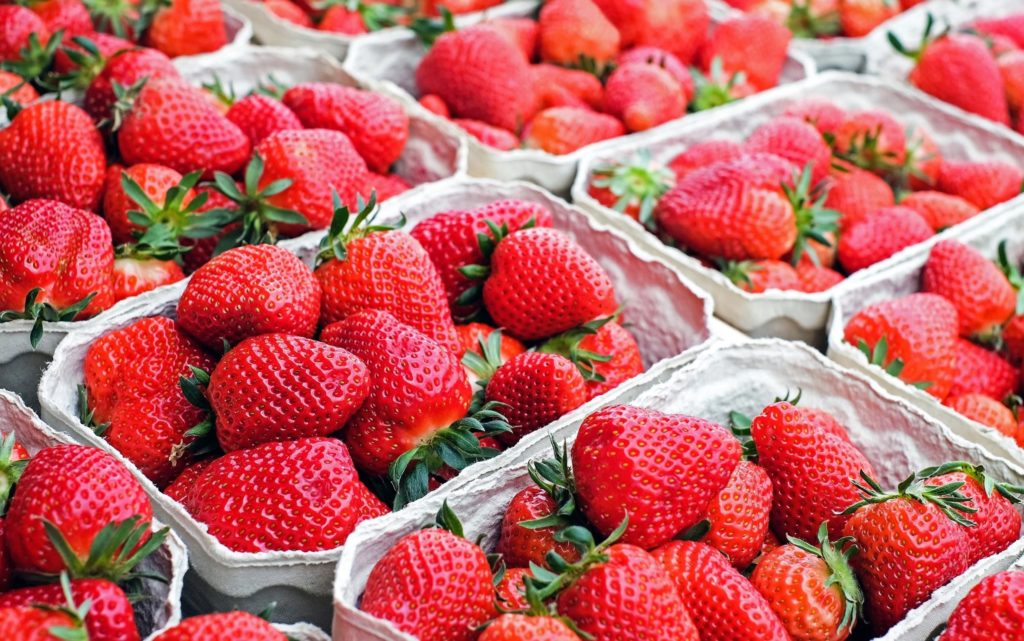By: Abbey Thiel
Ice cream is a nearly perfect treat. It’s sweet and creamy. Brings relief on a hot, summer day.
But, it does have one fatal flaw.
It melts.
Often way more quickly than we would like.
Luckily, we have something called science!
And very recently, there was a huge scientific breakthrough in ice cream.
So, let me tell you the story of the accidental discovery of no-melt ice cream.
One unassuming day, a Japanese pastry chef was tasked with creating an innovative dessert that utilized a crop of misshapen strawberries. He wanted to use the polyphenols in the berries, molecules with antioxidant properties, to help boost the dessert’s nutrition.
The problem was, every time the polyphenols were added to this dairy-based dessert, the cream completely solidified. One minute it was liquid and the next moment the whole mixture seized.
While this annoyed the pastry chef, scientists at Kanawaza University saw the potential. Immediately, they started experimenting with adding strawberry polyphenols to ice cream.
The result?
Never melting ice cream! Amazing!
As a food scientist, I couldn’t wait to hear what those sneaky polyphenols were doing in the cream to yield a frozen dessert that resisted melting.
Unfortunately, the scientists gave only a few remarks. They vaguely stated that the polyphenols make it more difficult for the fat and water in the ice cream to separate.
As someone who studies the microstructure of foods, this explanation seemed incredibly vague and disappointing.
The specifics, like the ingredients and process of making no-melt ice cream, are still hidden. As is the mechanism by which the polyphenols actually help the ice cream resist melting.
And this makes sense, since whichever ice cream manufacturers can figure out how to produce no-melt ice cream will have a big payday coming their way.
But, just because the inventors are unwilling to share the details, doesn’t mean we have to give up.
Instead, let’s do a little digging.
What do we know about how ice cream melts?
There’s been a ton of research on slowing down how quickly ice cream melts. Often simple tweaks to ice cream formulations or ice cream processing can have a huge impact on melting behavior.
For example, one study showed that just whipping in more air bubbles into ice cream during freezing can delay melting and helps the melted ice cream retain its shape.
Another study illustrated that adding more thickeners, like carrageenan, guar gum, and locust bean gum, increases the ice cream mix viscosity and also slows melting.
Simply changing the freezing condition can also slow melting. Increasing the speed of the dasher, the blade that rotates and scrapes the freezer as the ice cream is being made, increases the melting resistance of the product. This stems from the fact that a higher dasher speed creates extensive fat networks that can help the ice cream stand-up better.
So, how are strawberry polyphenols delaying how fast ice cream melts?
Check this out.
“The interaction of polyphenols with proteins is an old but continuous research topic.” –Zhang et al., 2014
It seems that polyphenols are known for their affinity for proteins and this includes the dairy proteins in milk.
Both casein and whey proteins have been studied for their ability to bind polyphenols, which occurs through hydrogen bonding and hydrophobic interactions.
Each polyphenol can serve as a bridge between multiple proteins, producing huge networks. These protein-polyphenol networks can result in gels capable of entrapping anything from water droplets to fat globules.
There’s even evidence that the addition of a small amount of polyphenols to a protein solution can increase gel strength and hardness.
My point is, the addition of polyphenols to ice cream likely results in the proteins and polyphenols forming a gel.
And this gel is strong enough to hold up air bubbles, fat globules, and ice crystals even after sitting out at warm temperatures. Even if all the ice melts away, the gel maintains the food’s structure and stand-up properties.
Do I have proof of this? No.
But, is it my best guess? Definitely.
So, if you let your never-melting ice cream sit out for hours, you’re not really eating ice cream anymore. It’s really just a foam where the air bubbles are suspended by the protein network.
All the ice in the ice cream is melted. It probably resembles something like a mousse at this point.
In the end, the no-melt ice cream in all likelihood melts. There doesn’t seem to be anything special about strawberry polyphenols that they could stop ice crystals from melting into water at warm temperatures.
It’s really just a trick of the eye. We can’t visually confirm that the ice has melted, since the ice cream structure is so strong due to the affinity of polyphenols for proteins.
Which I guess is still pretty cool.
(Even if the ice cream technically melts!)
What I’m saying is long before the polyphenol no-melt ice cream, consumers have noticed some ice cream products that appear to never melt. NPR has even reported new stories on melt-resistant ice cream and Science Friday featured it as a topic on one of their podcasts.
Don’t believe me? Try it at home.
It’ll luckily be awhile for most of us to get our hands on the no-melt ice cream, unless you are planning a trip to Japan. No worries, here’s a little experiment you can try out at home.
Purchase yourself some ice cream sandwiches, some of the cheaper, store-brands ones tend to work best. Unwrap one of the sandwiches and let it sit out for an hour or so. If it’s nice out, you can even place it in the sun.
You might be surprised to return to an ice cream sandwich that looks nearly identical. Somehow it hasn’t melted down and has almost entirely maintained its shape even at warm temperatures.
Now, this isn’t exactly ‘never melting ice cream’. The ice crystals have undoubtedly melted into water. We can’t exactly stop that.
What we can control is the formation of a large, entangled network of fat globules. Think of it like a bunch of tiny oil droplets are holding hands to form an extensive matrix.
Alone, each fat globule wouldn’t confer any strength to the ice cream, but together, the fat globule network can hold in air cells and tiny water droplets. It’s this fat network that makes the ice cream sandwich appear to have not melted. It’s strong enough to stand up, even once all the ice is gone.
Once all the ice has melted, you really no longer have an ice cream cone. Instead, you are left with a foam, or air bubbles surrounded by a serum. Nevertheless, to the human eye the sandwich still resembles that look of the frozen ice cream.
Sources
Featured Image: Image by Diese lizenzfreien Fotos darfst du zwar verwenden from Pixabay

Abbey Thiel | Linkedin
SMF Blog Writer
Abbey discovered that food science was a real major while attending University of Wisconsin-Madison, and quickly transferred into the department. After graduating with a B.S. in food science, she decided to stay in Madison to pursue her PhD. Her research explores the fat network found within ice cream, and yes, there’s lots of ice cream parties! If not found sitting at a microscope for extended amounts of time, Abbey enjoys the great Midwestern sport of log rolling (Google it) and laughing really loud. She is also very busy passing on her passion for food science to her two-year-old niece, whose favorite color is bacon and has hopes of growing up to be soup.

 Photo by
Photo by 




Leave a Reply